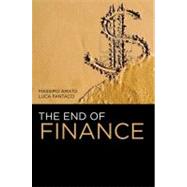
| Introduction | p. vii |
| Phenomenology | |
| Do we know what the financial markets are? | p. 3 |
| At the root of the possibility of crisis: Liquidity and risk | p. 14 |
| What is credit? | p. 25 |
| What is money? | p. 35 |
| Finance starting from the end | p. 43 |
| Capitalism and debt: A matter of life and death | p. 53 |
| History | |
| From credit risk to liquidity risk (2008) | p. 67 |
| The globalization of capital (1973) | p. 76 |
| 'Fiat dollar'. And the world saw that it was good (1971) | p. 88 |
| The Eurodollar chimera (1958) | p. 100 |
| The European Payments Union (1950) | p. 110 |
| Bretton Woods: The plan that might have made it (1944) | p. 121 |
| Bretton Woods: The system that found implementation (1944) | p. 133 |
| The standard crisis (1929) | p. 146 |
| Orchestra rehearsal. The international gold standard and the dissolution of gold (1871) | p. 159 |
| Money before and after the gold standard (1717) | p. 174 |
| Money for nothing: The invention of central banking (1694) | p. 183 |
| The international currency of the trade fairs (1579) | p. 197 |
| Politics | |
| Double or quits? | p. 211 |
| The way out of liquidity: The Gordian knot and Utopia | p. 221 |
| Prevention or cure? The structural paradox of the anti-crisis policies | p. 232 |
| Another finance | p. 242 |
| The (rare) 'green shoots' of a possible reform | p. 253 |
| If not now, when? | p. 268 |
| Notes | p. 278 |
| Index | p. 305 |
| Table of Contents provided by Ingram. All Rights Reserved. |
The New copy of this book will include any supplemental materials advertised. Please check the title of the book to determine if it should include any access cards, study guides, lab manuals, CDs, etc.
The Used, Rental and eBook copies of this book are not guaranteed to include any supplemental materials. Typically, only the book itself is included. This is true even if the title states it includes any access cards, study guides, lab manuals, CDs, etc.